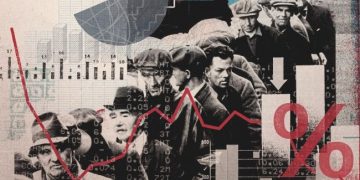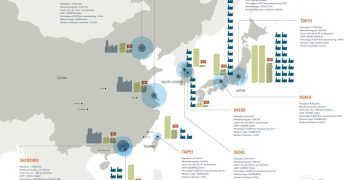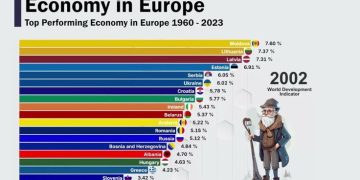The global economy has faced unprecedented challenges in the wake of the COVID-19 pandemic, with countries around the world experiencing severe disruptions in trade, supply chains, and labor markets. As economies begin to recover, the question arises: how can countries find the right balance between achieving short-term recovery and ensuring long-term, sustainable growth? Balancing economic recovery involves navigating a delicate interplay between fiscal stimulus, structural reforms, and social support systems, all while addressing the changing nature of global trade and technology.
This article delves into how various nations can manage the complex dynamics of economic recovery, considering their unique challenges, economic structures, and policy options.
1. The Global Economic Landscape: A Diverse Path to Recovery
While the pandemic affected every corner of the globe, countries’ experiences and responses to the economic fallout have been varied. Developed economies, emerging markets, and developing nations each face different challenges and have different capacities to support recovery.
Developed Economies: Stimulus and Structural Change
In many developed countries, such as the United States, European Union member states, and Japan, governments introduced large fiscal stimulus packages to support businesses, workers, and the healthcare sector during the pandemic. These measures, which included direct financial assistance, unemployment benefits, and liquidity support for businesses, were critical in preventing even deeper recessions. As the pandemic’s immediate effects begin to subside, these countries now face the challenge of sustaining economic growth while managing rising debt levels.
The key to a successful recovery in these economies lies in striking a balance between fiscal discipline and continued investment in long-term growth. Structural reforms, such as investing in technology, infrastructure, and renewable energy, can help diversify economies and create new industries that are more resilient to future shocks. Moreover, addressing income inequality and improving access to education and healthcare can enhance social mobility and ensure that economic growth benefits all citizens.
Emerging Markets: Navigating Debt and Structural Vulnerabilities
Emerging markets (EMs) face a more complex set of challenges in their recovery processes. These countries, including Brazil, India, South Africa, and Mexico, often struggle with high levels of public debt, limited access to vaccines, and pre-existing structural weaknesses in their economies, such as income inequality and dependence on commodity exports.
For many emerging economies, a successful recovery hinges on managing external debt and securing funding for public health initiatives. The World Bank and the International Monetary Fund (IMF) have provided support to EMs through debt relief programs, but longer-term solutions will be required to ensure that these nations can recover without incurring unsustainable debt levels. Economic diversification, focusing on sectors like technology, agriculture, and manufacturing, will also be crucial for reducing dependency on volatile commodities.
Furthermore, EMs must focus on strengthening healthcare systems and increasing vaccine distribution to protect their populations and provide a foundation for economic recovery. Political stability, rule of law, and improved infrastructure will also play critical roles in attracting investment and fostering an environment conducive to growth.
Developing Nations: Fostering Sustainable Growth Amidst Vulnerabilities
Developing nations, particularly those in Africa and Southeast Asia, are among the most vulnerable to the impacts of economic crises. These countries often face challenges such as high poverty rates, weak governance, and limited access to global markets. While some have made significant strides in improving their economic performance in recent years, the pandemic has set back their progress, particularly in sectors like agriculture, tourism, and informal employment.
For developing nations, the path to recovery must include a focus on poverty alleviation, job creation, and investment in critical sectors such as education, healthcare, and infrastructure. International support, including debt relief and development aid, will be essential in helping these countries recover. Additionally, improving access to technology and financial services can empower individuals and small businesses, contributing to greater economic participation and resilience.
2. The Role of Government Policy in Economic Recovery
Governments play a central role in shaping the trajectory of economic recovery. The policies they adopt—ranging from fiscal stimulus and taxation to regulation and trade—determine the pace and sustainability of recovery. However, the global nature of the pandemic and its economic fallout requires coordinated international efforts, as well as national policies that address both immediate challenges and long-term goals.
Fiscal Stimulus: Navigating the Trade-Offs
During the pandemic, fiscal stimulus became a cornerstone of many countries’ responses. For advanced economies, the need for stimulus was clear as the private sector contracted and unemployment soared. Governments used fiscal policy to boost aggregate demand, support businesses, and protect workers. However, as economies recover, the question remains: how long can these fiscal measures continue, and what happens when they are scaled back?
The trade-off lies between supporting short-term economic recovery and ensuring long-term fiscal health. As stimulus measures are reduced, countries will need to find ways to maintain growth without overspending. A gradual reduction in public sector involvement, while promoting private-sector recovery, is essential. Additionally, finding new sources of government revenue through progressive tax policies and reducing wasteful spending can ensure that public finances remain stable.
Monetary Policy: Low Interest Rates and Inflation Risks
Central banks worldwide have implemented low interest rates and expansive monetary policies to support economic activity. These measures, designed to boost investment and consumption, were vital in preventing deeper recessions. However, the longer low interest rates persist, the greater the risk of inflation, asset bubbles, and income inequality.
Monetary policy must strike a delicate balance. As the global economy recovers, central banks may begin tightening policies to prevent overheating. This could involve raising interest rates or scaling back bond-buying programs. However, this must be done carefully to avoid derailing the recovery, particularly in emerging markets where rising interest rates could lead to capital outflows and increased debt burdens.
Structural Reforms: Building a Resilient Future
The pandemic has highlighted the weaknesses in global supply chains, the gig economy, and labor markets. For recovery to be sustainable, governments must focus on long-term structural reforms. This includes promoting digital transformation, improving education systems, fostering innovation, and reducing inequalities.
In many advanced economies, labor market reforms may be necessary to address the challenges posed by automation and the shift to remote work. Ensuring that workers have the skills needed for the digital economy will be vital. Similarly, policies that promote innovation and green technologies can help countries position themselves as leaders in emerging industries like renewable energy, artificial intelligence, and biotechnology.
In developing and emerging economies, structural reforms may focus on improving governance, reducing corruption, investing in infrastructure, and diversifying economies away from reliance on volatile sectors. Strengthening the social safety net and expanding access to healthcare and education are also essential components of these reforms.

3. The Role of International Cooperation in Economic Recovery
While national policies are crucial, no country can tackle the economic recovery alone. International cooperation is essential for addressing global challenges such as vaccine distribution, climate change, and supply chain disruptions.
Global Trade and Supply Chains: Restoring Stability
One of the main challenges of the pandemic has been the disruption of global supply chains. From shortages of essential goods to delays in production, the global economy has suffered from the interconnectedness of trade networks. Restoring stability to global supply chains will require collaboration between governments and industries to build more resilient systems.
Countries will need to invest in diversifying their trade relationships and reduce dependence on a single supplier or market. This may involve reshoring manufacturing, particularly in critical sectors such as healthcare and technology. Governments must also work together to ensure that global trade remains open and that protectionist measures do not hinder recovery.
Vaccine Distribution and Public Health
The COVID-19 vaccine rollout has been a critical aspect of recovery, with many countries racing to vaccinate their populations. However, disparities in vaccine access between developed and developing countries have exacerbated global inequalities. International cooperation, through mechanisms like COVAX, is essential for ensuring equitable access to vaccines and preventing the spread of new variants of the virus.
Countries must work together to support global public health initiatives, share knowledge and resources, and ensure that vaccines, diagnostics, and treatments are available to all nations. This will not only help prevent future health crises but also accelerate the global economic recovery.
Climate Change and Green Recovery
The pandemic has also highlighted the need for a green and sustainable recovery. The economic recovery process presents a unique opportunity to address climate change by investing in renewable energy, clean technologies, and sustainable practices.
International cooperation on climate change is critical to ensuring that recovery is not just economic but also sustainable. The Paris Agreement remains a key framework for global efforts to combat climate change. Countries must work together to implement green policies, promote green finance, and transition to a low-carbon economy. This approach will help create jobs, reduce environmental damage, and ensure that future generations inherit a more sustainable world.
4. Conclusion: Striving for a Balanced Recovery
As countries navigate the path to economic recovery, finding the right balance is essential. Governments must continue to provide support to businesses and workers, while also implementing long-term structural reforms that foster innovation, sustainability, and resilience. At the same time, international cooperation remains critical to addressing global challenges and ensuring that the recovery is inclusive and sustainable.
Ultimately, the world’s recovery from the pandemic will be shaped by the decisions made today. By focusing on the balance between short-term stimulus and long-term growth, and by fostering collaboration across borders, countries can build a more resilient, equitable, and sustainable global economy.































